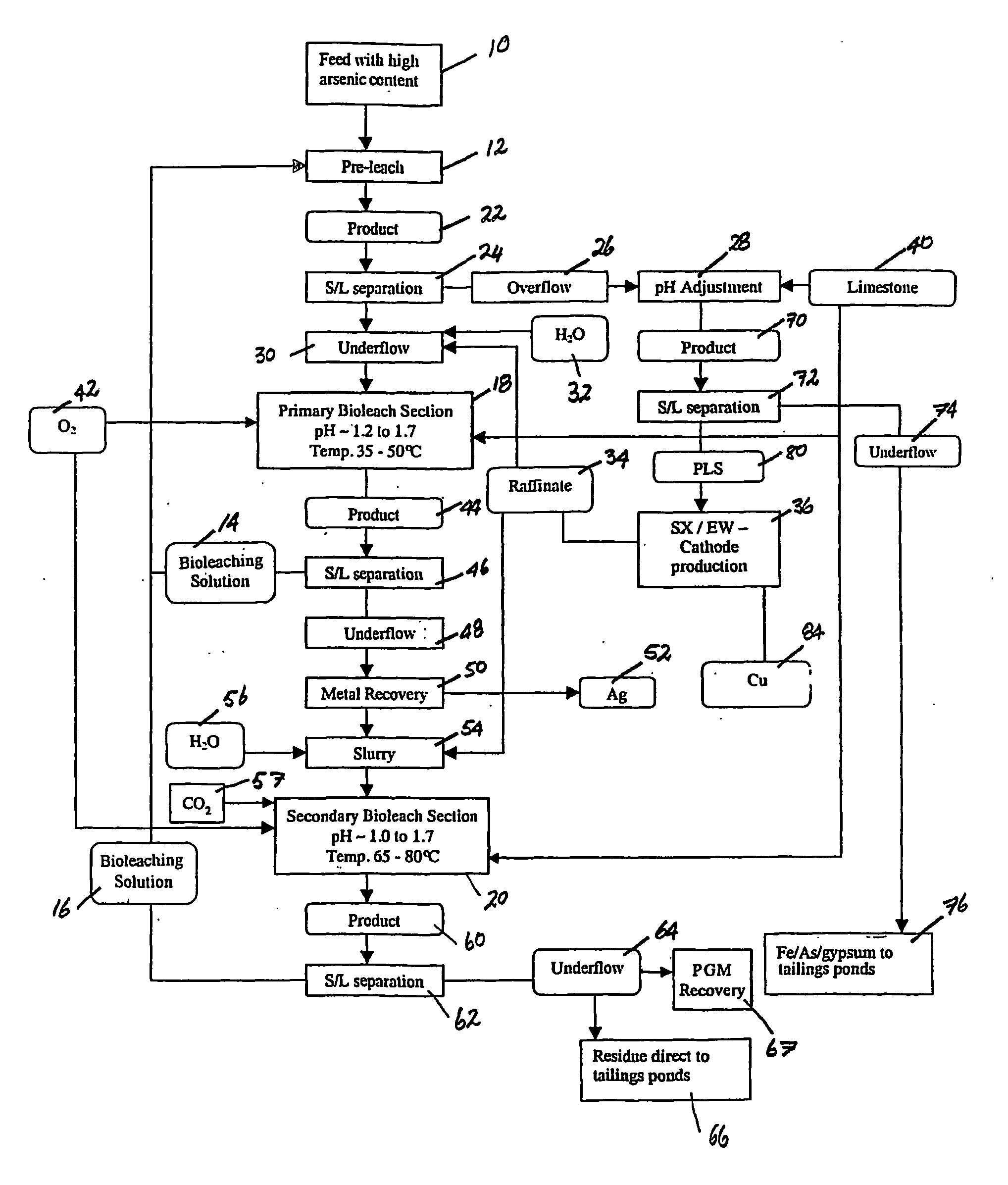Treatment of base metal concentrate by a two-step bioleaching process
a bioleaching process and concentrate technology, applied in the field of treatment of a base metal containing concentrate, can solve the problems of recovering a base metal such as copper from a concentrate, which contains arsenic, using a bioleaching process, and achieve the effects of reducing the amount of cyanidation
- Summary
- Abstract
- Description
- Claims
- Application Information
AI Technical Summary
Benefits of technology
Problems solved by technology
Method used
Image
Examples
Embodiment Construction
[0027] In the method of the invention a concentrate 10 which contains a base metal such as copper and which may have a high arsenic content is subjected to a preleaching step 12. In this step the fresh concentrate is contacted with bioleach overflow solutions 14 and 16 respectively produced in subsequent primary and thermophilic secondary bioleaching stages 18 and 20.
[0028] The solutions 14 and 16 are rich in ferric and remove easily leachable copper from the feed 10. This ensures a lower residual copper tenor in the bioleaching tanks in the stages 18 and 20.
[0029] The product 22 of the preleaching stage is subjected to solid / liquid separation 24. An overflow solution 26 from the separation step 24 is directed to a pH adjustment stage 28 while the underflow 30, diluted with water 32 and raffinate 34 from a solvent extraction section 36, is fed to the primary bioleaching stage 18.
[0030] The purpose of the primary bioleaching stage 18 is to oxidise sulphide minerals in the feed and...
PUM
| Property | Measurement | Unit |
|---|---|---|
| temperature | aaaaa | aaaaa |
| temperature | aaaaa | aaaaa |
| temperature | aaaaa | aaaaa |
Abstract
Description
Claims
Application Information
 Login to View More
Login to View More - R&D
- Intellectual Property
- Life Sciences
- Materials
- Tech Scout
- Unparalleled Data Quality
- Higher Quality Content
- 60% Fewer Hallucinations
Browse by: Latest US Patents, China's latest patents, Technical Efficacy Thesaurus, Application Domain, Technology Topic, Popular Technical Reports.
© 2025 PatSnap. All rights reserved.Legal|Privacy policy|Modern Slavery Act Transparency Statement|Sitemap|About US| Contact US: help@patsnap.com


